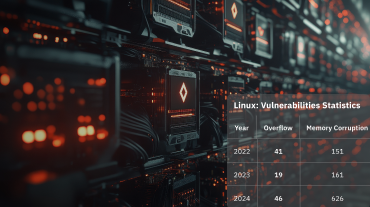As oil and gas companies use more devices at the edge of their networks for automation in industrial processes, bad actors can significantly damage the infrastructure. This can lead to shutdowns of oil and gas plants and interruptions in extraction, delivery, and refining processes. Despite increased investments into the oil and gas industry cybersecurity solutions to protect its edge environment, traditional cloud-based security solutions are resource intensive and inefficient in handling the growing threats and vulnerabilities across digital technologies and edge devices.
Existing cybersecurity tooling relies on cloud computing and often requires data to be sent to third-party for inspection; this potentially puts the edge infrastructure at risk. Also, the cellular-connected edge devices require forensic and telemetry data to be sent to the cloud for processing, which increases bandwidth requirements with additional expenses. These combined make it less than ideal for highly distributed edge devices in the oil and gas industry.
New threats across the oil and gas sector include spoofing attacks, Denial of Service incidents, and command injections. For example, these threats involve data manipulation from level control sensors to mislead operators and control systems, presenting false efficiency levels. Additionally, attackers exploit network weaknesses, overloading systems with random instructions to shut down processes.
These threats have been more persistent and focused, with increased intensity and precision in their targeting. Utilizing artificial intelligence models, cyberattacks have become harder to identify, putting critical edge infrastructure at risk. Furthermore, advanced persistent threat groups are also employing AI to launch attacks on major public companies within the oil and gas sector.
How AI EdgeLabs Solutions Improve Security in the Oil and Gas Sector
AI EdgeLabs solutions offer a robust alternative to traditional cloud-based security approaches by addressing the unique challenges of edge environments in the oil and gas industry. These benefits include:
- Real-time Threat Detection and Response: AI EdgeLabs solutions can analyze data locally, enabling real-time threat detection and immediate response. This minimizes latency, allowing for quicker countermeasures against potential threats, crucial for the continuous operation of oil and gas facilities.
- Reduced Bandwidth Usage: By processing data at the edge rather than sending it to the cloud, AI EdgeLabs solutions significantly reduce bandwidth usage. This is particularly advantageous for remote oil and gas sites where bandwidth can be limited and expensive.
- Enhanced Data Privacy and Security: Keeping data processing local reduces the need to transmit sensitive information over the internet, thereby enhancing data privacy and security. This localized approach mitigates the risk associated with data breaches during transmission.
- Scalability and Flexibility: AI EdgeLabs solutions are highly scalable and can be deployed across a wide range of devices and locations. This flexibility is vital for the oil and gas industry, which operates in diverse and often harsh environments.
- Cost Efficiency: By reducing reliance on cloud computing resources and minimizing data transmission costs, AI EdgeLabs solutions can offer significant cost savings. This is particularly important for large-scale operations typical in the oil and gas sector.
- Improved Operational Efficiency: AI EdgeLabs solutions can optimize industrial processes by providing real-time analytics and insights. This leads to improved operational efficiency, predictive maintenance, and reduced downtime, ultimately enhancing productivity and profitability.
- Adaptive Learning and Evolution: AI models deployed at the edge can continuously learn and adapt to new threats, improving their effectiveness over time. This adaptive capability is crucial for staying ahead of evolving cyber threats in the oil and gas industry.
By leveraging AI EdgeLabs solutions, oil and gas companies can better secure their edge environments, ensuring the resilience and reliability of their critical infrastructure. These advanced solutions not only enhance security but also drive operational efficiencies and cost savings, positioning the industry to better handle the complexities and risks of modern cyber threats.












